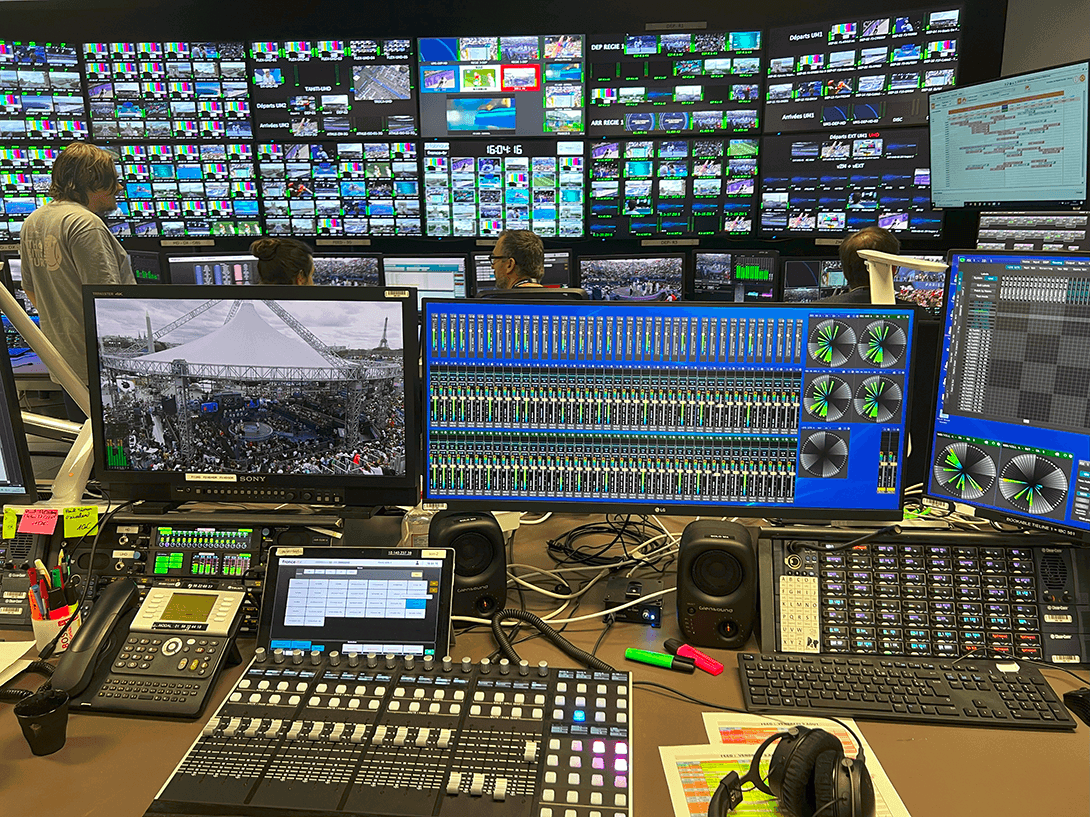2024 was a huge year for sport, from the Olympics to Euro 2024, the summer has been filled with triumphant sporting endeavors. But how audiences experience these events outside of the arenas has changed significantly and broadcasters are working hard to keep up with multimedia consumption. From methods of consumption to developments in transmission, the broadcast of sporting events is constantly evolving.
From home cinemas, to TikTok and YouTube, content is being experienced in a multitude of ways and Nicolas Sturmel, Senior Network Technologist at DirectOut, is well placed to share his insight into how major sporting events are staying on-air for longer, with increased clarity and transmitting content across the globe, ensuring home audiences witness the action within moments of it happening.
DirectOut products are used to ensure critical, immersive 7.1 Dolby Atmos sound, can be transmitted constantly, alongside 4K pictures, 24 hours a day across the world to millions of people live, without a glitch.
Digital content is sent out across multiple channels, not just on broadcast media designed for home televisions, but also digital outlets, such as smart-phone apps and browser-connected streaming-devices. Consumers now demand higher quality content and watch a range of viewing perspectives, sometimes across multiple screens. Home electronics have improved at an extraordinary rate and consumer uptake is high. Home audio is also evolving, with sleek solutions, that enable surround sound to be delivered from easy-to-use singular sound bars, rather than a full surround-system with separate speakers.
The amount of data required for content like puts huge strain on IT networks, so the industry has responded by developing the SMPTE ST2110 protocol, a new way of transporting audio, video, and metadata across an IT network. It works by splitting data into three streams, called essences, limiting the size of the information by only sending active streams and minimizes the requirement for decoding hardware.
DirectOut’s PRODIGY.MX is at the heart of networks like these, as it is capable of translating the various protocols seamlessly. Thanks to the modular design of the PRODIGY series, cards can be added or removed as needed to increase usability. Network modules like the Ravenna card include an NMOS interface specification, defining data models and ensuring devices can be controlled by any software compliant with it. Launched at IBC2024, a new out of band NMOS mode allows even more flexibility for the end user. By harnessing these specifications within the hardware, we are finding a balance between complex network capability and overwhelming the audio engineers that need to use the equipment effectively.
Until recently, using proprietary network protocols such as Dante had been the norm. The end user benefits from their simplicity and ease of use, but is offered limited versatility. Broadcast situations like the Olympics require a much more complex networking system to provide additional content, requiring more network knowledge to facilitate. We are seeing more IT literate audio engineers as the reliance on Audio over Internet Protocol (AoIP) increases.
Computer network understanding is becoming a much more desirable skill with broadcasters looking to maximize their personnel budgets and get the most out of their equipment. Having the right technical staff is crucial, but by simplifying our hardware interface with the network, engineers are better able maintain the required complex connection without being overwhelmed, ensuring that they can benefit from the full capability of all our products.
For large scale sporting events like the Olympics, that are broadcast across the world and then adapted in a variety of ways locally, the audio team can also utilize globcon to create local sub-mixes within the PRODIGY, if required. The PRODIGY.MP AutoMix feature is very useful in this application, allowing engineers to mix and monitor audio feeds without the requirement for an additional mixing console.
In Paris, the team at France TV was able to mix all broadcast audio streams at once, including HD video content and 4K content with Dolby Atmos. Engineers switched monitoring between the two streams directly via globcon, without the need for an additional mixing console. When audio engineers have the skillset to mix audio artfully, but also invest time in the set up and control of software like globcon, there is no limit to what can be achieved.
Once the infrastructure is installed and the broadcast is running, the equipment may have to remain in use for many weeks, continuing to run effectively without being switched off or rebooted. At DirectOut, we run tests to ensure that our solutions are able to run for long periods in the most challenging environmental conditions, ensuring our end users can leave their units running for months without any concern.
Exploiting the reliability of the PRODIGY series enables engineers to concentrate on producing excellent content without worrying about the performance of their equipment. This reliability is essential for sports broadcasters, especially for large scale, multi-venue sports events.
By producing hardware that can interface with all devices on the network, transport and convert large amounts of audio data and be simplistic to interface with, DirectOut has ensured that sports broadcasters can continue to offer innovative and exciting content to millions of sports fans across the globe.

